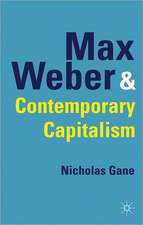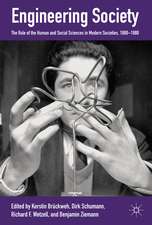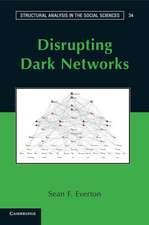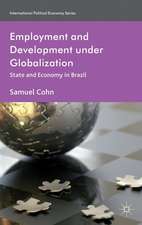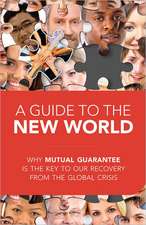Cultures of Contamination – Legacies of Pollution in Russia and the US: Research in Social Problems and Public Policy
Autor Michael Edelstein, Maria Tysiachniouk, Lyudmila V. Smirnovaen Limba Engleză Hardback – 27 mar 2007
Section one focuses on the psycho-social dynamics of chemical contamination. Section two deals with nuclear events, both accidents, but also the closed cities and closed society needed to produce a nuclear context. Section 3 addresses mitigations, dominated by 4 out of 5 chapters addressing Russia. And section four provides perspectives, comparative pieces addressing secrecy in nuclear programs, distorted risk communication in the aftermath of the World Trade Center Disaster, environmental altruism and in core social response to environmental challenges.
Research in Social Problems and Public Policy is now available online at ScienceDirect — full-text online of volumes 8 onwards.
*Examines the cultures most responsible for global contamination
*Adopts a global and practical perspective, with case examples from the United States and Russia.
*Seeks to stop contaminations from taking place in the future and positively address those from the past.
Preț: 870.11 lei
Preț vechi: 1130.02 lei
-23% Nou
Puncte Express: 1305
Preț estimativ în valută:
166.49€ • 173.85$ • 137.48£
166.49€ • 173.85$ • 137.48£
Carte tipărită la comandă
Livrare economică 15-29 aprilie
Preluare comenzi: 021 569.72.76
Specificații
ISBN-13: 9780762313716
ISBN-10: 0762313714
Pagini: 522
Ilustrații: Illustrated
Dimensiuni: 156 x 234 x 31 mm
Greutate: 0.9 kg
Ediția:New.
Editura: Emerald Publishing
Seria Research in Social Problems and Public Policy
ISBN-10: 0762313714
Pagini: 522
Ilustrații: Illustrated
Dimensiuni: 156 x 234 x 31 mm
Greutate: 0.9 kg
Ediția:New.
Editura: Emerald Publishing
Seria Research in Social Problems and Public Policy
Public țintă
Researchers and students of social science, environmental scientists, sociologistsCuprins
Introduction:
Chapter one: Sustainability and the Need to Deal with the Contaminated Legacy: A Comparison of Russia and the U.S. Michael R. Edelstein, pp. 1-9
Part 1: The Dynamics of Chemical Contamination
Section 1 Introduction 10-14
Chapter 1: The Love Canal: Social Science Research in a Community in Crisis. Adeline G. Levine, pp 14-23
Chapter 2: Forging Change in a Contaminated Russian City: A Longitudinal View of Kirishi. Olga Tsepilova 19 24-43
Chapter 3: Sokol: Seeing the Forests for the Trees. Antonina Kulyasova and Ivan Kulyasov 28 43-71
Chapter 4: The Case of the Pinewood Landfill: The Politics of Risk, Rationality and the Disposal of Hazardous Waste. Nicholas Martyniak, William Hallman and Abraham Wandersman, 18 72-90
Chapter 5: Fear of Cancer in a Rural Appalachian Community Following Notification of an Environmental Hazard. Janice Hastrup, Sherilyn N. Thomas and Michael R. Edelstein 27
91-118
Chapter 6: Toxic Water and the Anthill Effect: The Development of a Subculture of Distress in a Once Contaminated Community. Stephen R. Couch and Anne E. Mercuri 27 119-146
Part 2: Closed Cities, Closed Accidents and a Closed Society
Section 2 Introduction 6 147-153
Chapter 7: Closed City, Open Disaster. Nadezda Kutepova and Olga Tsepilova 19 153-170
Chapter 8: The Most Contaminated Place on Earth: Community Response to Long-Term Radiological Disaster in Russia’s Southern Urals . Natalia Mironova, Michael R. Edelstein, Maria Tysiachniouk, Jonathan Reisman 20 171-191
Chapter 9: Psycho-Social Consequences Due to Radioactive Contamination in the Techa River Region of Russia. Michael R. Edelstein and Maria Tysiachniouk, 14 192-206
Chapter 10: Environmental Risk Perception after Chernoyl. Irina A. Zykova 18 207-225
Chapter 11: Habitual Risk Taking in Dzerzhinsk: Daily Life in the “Capital of Soviet Chemistry.
Alla Bolotova, 24 226-249
Chapter 12: Hanford: A Culture of Secrecy, Denial and Impact. Michael R. Edelstein 20 250-270
Part 3: Mitigations
Introduction: Part 3 5 271-276
A Grassroots Perspective on the Brownfields and Superfund Programs. Madelyn Hoffman 33 pages word 277-303
Cleaning Up From the Cold War: Medical, Ecological and Psychological Aspects of the Russian Experience with Chemical Weapons Destruction. Boris N. Filatov, Valentina V. Klauchek, Nikolay G. Britanov, Sergei V. Klauchek. 29 304-333
Chernobyl: A Liquidator’s Story. Ludmila Smirnova and Michael Edelstein 10 334-344
Into Thin Air: Training Children to Live in Polluted Air. Oleg Glazachev 17 345-362
Volgograd’s Ecological Gymnasium: Adapting Children to a Contaminated Neighborhood. Ludmila Smirnova 19 pages word 363-382
Part 4: Perspectives:
Introduction: Section 4
Secrecy and the U.S. Anti-Nuclear Movement. Susan Maret 31 365-396
The World Trade Center Disaster---Environmental Risk, Public Fear, and Changed Realities. Michael Edelstein and Catherine McVay Hughes —38 397-435
Environmental Altruism: A comparison of Russia and the United States. Margaret Gibbs, Tatiana Andrushenko, Natalya Makarevich and Robert Binford 18 pages word needs edit 435-453
Luda and Michael R. Edelstein “An American Perspective on Comparative Cultures of Contamination” 454-464
Chapter one: Sustainability and the Need to Deal with the Contaminated Legacy: A Comparison of Russia and the U.S. Michael R. Edelstein, pp. 1-9
Part 1: The Dynamics of Chemical Contamination
Section 1 Introduction 10-14
Chapter 1: The Love Canal: Social Science Research in a Community in Crisis. Adeline G. Levine, pp 14-23
Chapter 2: Forging Change in a Contaminated Russian City: A Longitudinal View of Kirishi. Olga Tsepilova 19 24-43
Chapter 3: Sokol: Seeing the Forests for the Trees. Antonina Kulyasova and Ivan Kulyasov 28 43-71
Chapter 4: The Case of the Pinewood Landfill: The Politics of Risk, Rationality and the Disposal of Hazardous Waste. Nicholas Martyniak, William Hallman and Abraham Wandersman, 18 72-90
Chapter 5: Fear of Cancer in a Rural Appalachian Community Following Notification of an Environmental Hazard. Janice Hastrup, Sherilyn N. Thomas and Michael R. Edelstein 27
91-118
Chapter 6: Toxic Water and the Anthill Effect: The Development of a Subculture of Distress in a Once Contaminated Community. Stephen R. Couch and Anne E. Mercuri 27 119-146
Part 2: Closed Cities, Closed Accidents and a Closed Society
Section 2 Introduction 6 147-153
Chapter 7: Closed City, Open Disaster. Nadezda Kutepova and Olga Tsepilova 19 153-170
Chapter 8: The Most Contaminated Place on Earth: Community Response to Long-Term Radiological Disaster in Russia’s Southern Urals . Natalia Mironova, Michael R. Edelstein, Maria Tysiachniouk, Jonathan Reisman 20 171-191
Chapter 9: Psycho-Social Consequences Due to Radioactive Contamination in the Techa River Region of Russia. Michael R. Edelstein and Maria Tysiachniouk, 14 192-206
Chapter 10: Environmental Risk Perception after Chernoyl. Irina A. Zykova 18 207-225
Chapter 11: Habitual Risk Taking in Dzerzhinsk: Daily Life in the “Capital of Soviet Chemistry.
Alla Bolotova, 24 226-249
Chapter 12: Hanford: A Culture of Secrecy, Denial and Impact. Michael R. Edelstein 20 250-270
Part 3: Mitigations
Introduction: Part 3 5 271-276
A Grassroots Perspective on the Brownfields and Superfund Programs. Madelyn Hoffman 33 pages word 277-303
Cleaning Up From the Cold War: Medical, Ecological and Psychological Aspects of the Russian Experience with Chemical Weapons Destruction. Boris N. Filatov, Valentina V. Klauchek, Nikolay G. Britanov, Sergei V. Klauchek. 29 304-333
Chernobyl: A Liquidator’s Story. Ludmila Smirnova and Michael Edelstein 10 334-344
Into Thin Air: Training Children to Live in Polluted Air. Oleg Glazachev 17 345-362
Volgograd’s Ecological Gymnasium: Adapting Children to a Contaminated Neighborhood. Ludmila Smirnova 19 pages word 363-382
Part 4: Perspectives:
Introduction: Section 4
Secrecy and the U.S. Anti-Nuclear Movement. Susan Maret 31 365-396
The World Trade Center Disaster---Environmental Risk, Public Fear, and Changed Realities. Michael Edelstein and Catherine McVay Hughes —38 397-435
Environmental Altruism: A comparison of Russia and the United States. Margaret Gibbs, Tatiana Andrushenko, Natalya Makarevich and Robert Binford 18 pages word needs edit 435-453
Luda and Michael R. Edelstein “An American Perspective on Comparative Cultures of Contamination” 454-464
















